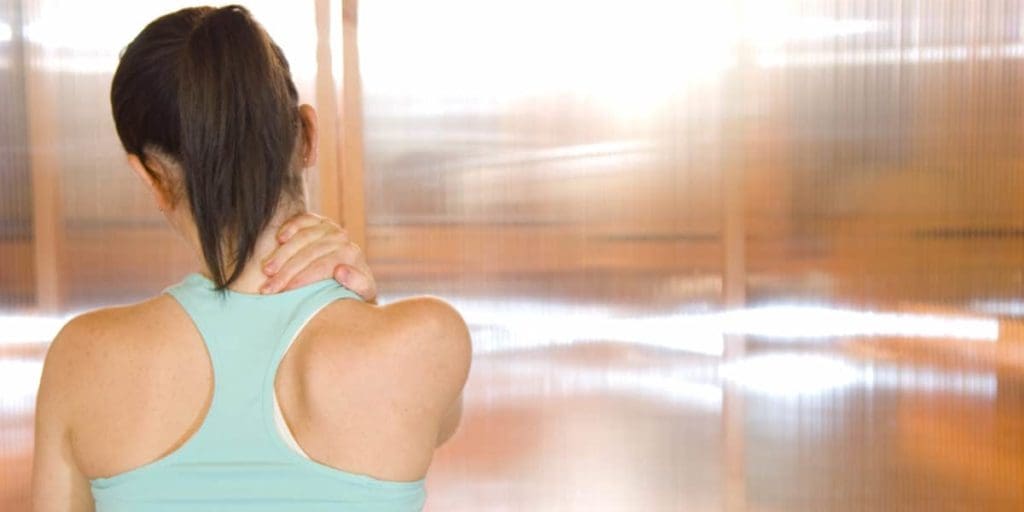Many of the pains we experience throughout the day are likely associated with our lifestyles and a result of bad habits. From lower back pain to shoulder pain to arthritis to headaches, our daily pains often prove to be a hindrance and can keep us from being productive and from enjoying life. These pains can be caused by knots otherwise known as myofascial trigger points. Massage therapy can reduce pain and discomfort associated with knots.
To decide if massage therapy is the right treatment for you, it’s important to understand what these knots are.
Myofascial trigger points 101
A myofascial trigger point is a “hyperirritable spot, usually within a taut band of skeletal muscle, which is painful on compression and can give rise to characteristic referred pain, motor dysfunction, and autonomic phenomena.” Quite simply, it’s a lump that forms as a result of an overworked muscle.
As you go about your day, your muscle tissues contract and knots are created when these muscle tissues cannot release/relax. These bumps are created with the buildup of some metabolic waste and occur at points where circulation is hindered, keeping fresh blood from flowing through those areas. They may cause you to experience limited movement range, pain and increased stress.
How myofascial trigger points form


Knots can occur as a result of any exceeded pressure, strain, injury or trauma over that point. Poor posture also serves as a powerful “activator and perpetuator” of myofascial trigger points. Overstress or overwork a specific group of muscle can contribute to the development of these knots as well. While research shows that exercise at some levels may help to reduce the pain of myofascial trigger points, it also shows that overtraining may be a cause and that further studies are needed to “investigate the effectiveness of exercise alone.”
Massage therapy as treatment
To sustain a healthy, it’s a good idea to eat a whole food, plant-based diet and maintain an active lifestyle complemented by massage therapy. Receiving consistent treatments of massage therapy could relieve your contracted or shortened muscles and ensure proper circulation.
Massage therapists are trained to deal with various knots. They use a multitude of pressure techniques and massage methods that improve overall muscle health and can help you manage and release myofascial trigger points.
One of the most effective massage therapies to release tight knots is trigger point therapy. Therapists directly work on the area and help to reduce it with sustained compression technique (deep tissue). With the use of fingers, thumb or elbow, a massage therapist applies pressure for deep tissue compression while the client should focus on proper breathing. While it may cause soreness for a few days, it’s not uncommon to feel relief after the first session or to “experience relief from symptoms they were not seeking treatment for, such as chronic hand.”
Sign of treatment success


You may be wondering how to know if your massage is successful. As your muscles adjust afterward, remember that the knot will not be clearly visible and that you will likely still see some signs of discomfort even when this therapy has worked well. Complete relaxation would not be instant, and that area would still feel sensitive.
Release may be partial reduction. Recognize if pain has been reduced; if it has, that means therapy is successful and additional sessions may likely help you fully recover.
Good pain vs bad pain
You may experience painful during a massage therapy session. But fear not: that pain may simultaneously provide relief. If you feel lighter and more relaxed after experiencing the pain, you’ve experienced a good pain and your therapy is working.
Your therapist may use improper therapy techniques or massage you with too much pressure. Or your condition may be more complicated than expected and require more advanced treatment. Severe pain on or near your myofascial trigger points, a burning sensation and/or a nauseating sensation are signs of bad pain and that you treatment should be stopped.
Myofascial trigger points self-care tips


In addition to massage therapy, try out self-care practices such as:
- Getting proper rest
- Reducing or avoiding stressful activity for a few days after experiencing pain
- Having physical therapy sessions
- Gently stretching while paying special attention to not overstretch
- Practicing self-massage with a tennis ball or a foam roller
Myofascial trigger points are common, but if you don’t treat them, the pain can increase. They may even result in postural stress and untreated muscles losing flexibility, making them far more challenging to manage. Massage therapy can be the key to releasing the stress and pain and may very well help you prevent them from coming back again.
How has massage therapy improved how you manage myofascial trigger points?
Tell us below in the comments!
What topics related to myofascial trigger points and the pain they cause would you like to see us research?
Email your ideas to info@painresource.com.
Are you on Facebook?






Hey Bella,
Great article. I run a physiotherapy clinic and my team and I are big advocates for working trigger points. The best tool I recommend patients picking up is a baseball. Not only is it widely available and super cheap but it is an excellent tool that can be used to work those trigger points. If you lean against the ball or lie down on it, you can really work those areas.
Best,
Lalitha
Physiotherapist